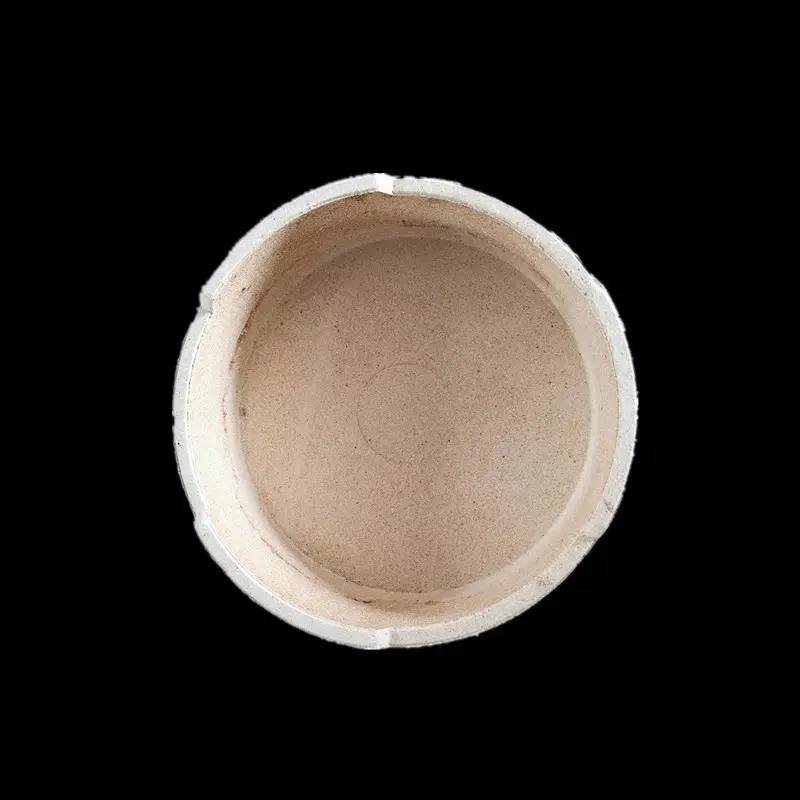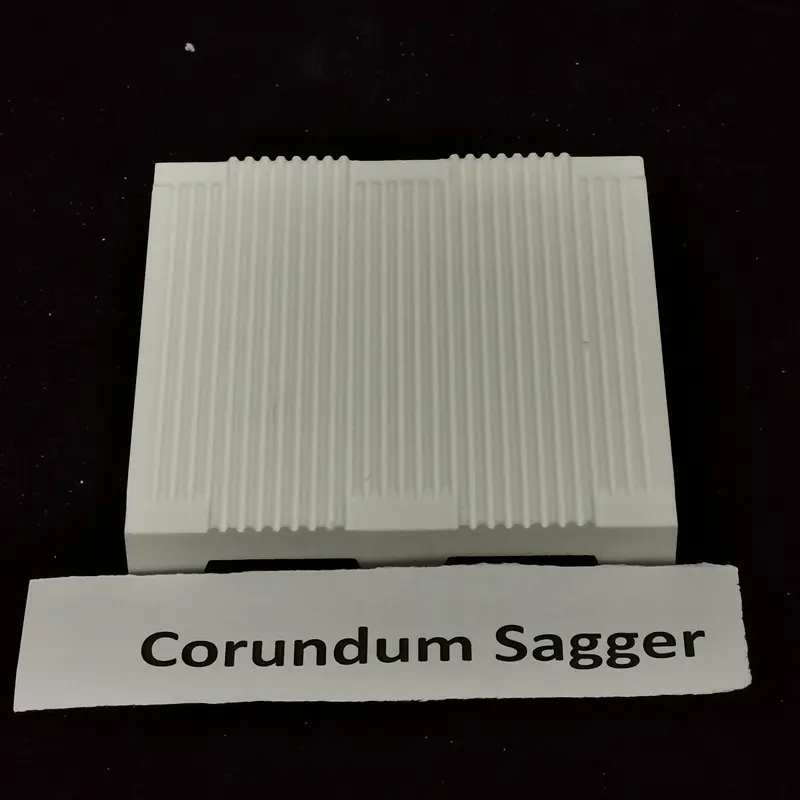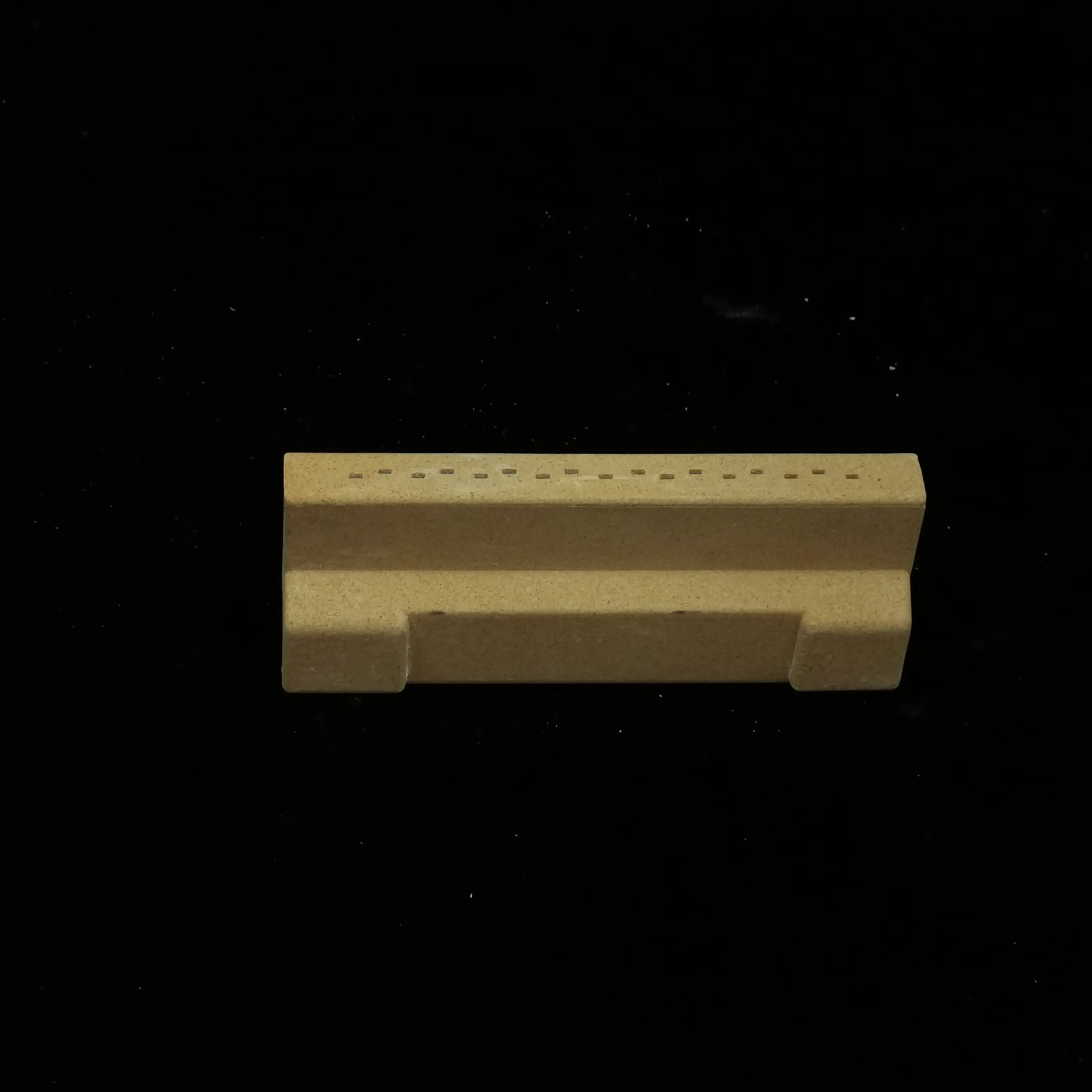Refractory Cordierite-Mullite Tray for Firing Rare Earth Powder in Tunnel Kiln
1. Importance of Rare Earth Powder Firing
Rare earth elements (REEs), such as neodymium, yttrium, cerium, and dysprosium, are critical in modern technologies, including high-performance magnets (NdFeB), LED phosphors, and catalytic converters. The firing process consolidates these powders into dense, functional materials through controlled sintering, typically at temperatures between 1400°C and 1600°C.
However, rare earth powders are highly reactive and sensitive to contamination. The choice of kiln furniture—particularly the trays or setters that hold the powders during firing—must address:
-
High-temperature stability (resistance to deformation or cracking).
-
Low thermal expansion (to prevent stress-induced failures).
-
Chemical inertness (to avoid reactions with rare earth compounds).
-
Thermal shock resistance (for rapid heating/cooling cycles).
Traditional alumina or silicon carbide trays often fall short in these aspects, making cordierite-mullite composites an optimal alternative.
2. Properties of Cordierite-Mullite Composites
Cordierite (2MgO·2Al₂O₃·5SiO₂) and mullite (3Al₂O₃·2SiO₂) are refractory ceramics known for their low thermal expansion, excellent thermal shock resistance, and good mechanical strength at high temperatures. When combined, they form a composite material that outperforms pure cordierite or mullite in several ways:
-
Ultra-Low Thermal Expansion (Cordierite: ~1–3 × 10⁻⁶/°C) – Prevents warping or cracking during rapid temperature changes in tunnel kilns.
-
High Refractoriness (Mullite: Up to 1800°C) – Ensures stability even at the upper limits of rare earth sintering temperatures.
-
Chemical Inertness – Resists reactions with rare earth oxides, preventing contamination.
-
Thermal Shock Resistance – Withstands repeated heating/cooling cycles without microcracking.
The microstructure of cordierite-mullite composites is engineered to balance porosity and density, ensuring sufficient thermal insulation while maintaining structural rigidity.
3. Design and Performance in Tunnel Kilns
Tunnel kilns are widely used in industrial-scale rare earth powder firing due to their continuous processing capability and uniform temperature distribution. The cordierite-mullite trays used in these kilns must meet stringent requirements:
-
Optimized Geometry – Designed to maximize load capacity while allowing even heat transfer.
-
Surface Smoothness – Minimizes sticking of rare earth powders, facilitating easy post-firing removal.
-
Multi-Layer Stacking Compatibility – Enables high-volume production with efficient kiln space utilization.
Unlike metal or lower-grade ceramic trays, cordierite-mullite trays do not introduce impurities (e.g., iron contamination from steel setters), which is crucial for maintaining the purity of rare earth materials.
4. Comparison with Alternative Kiln Furniture Materials
Several refractory materials are used in high-temperature kilns, but each has limitations when applied to rare earth powder firing:
| Material | Advantages | Disadvantages for Rare Earth Firing |
|---|---|---|
| Alumina (Al₂O₃) | High strength, chemical inertness | High thermal expansion, prone to cracking |
| Silicon Carbide (SiC) | Excellent thermal conductivity | Can react with rare earth oxides |
| Zirconia (ZrO₂) | High toughness | Expensive, prone to phase instability |
| Cordierite-Mullite | Best thermal shock resistance, low expansion, chemical inertness | Slightly lower mechanical strength than alumina |
Thus, cordierite-mullite composites provide the best compromise for rare earth applications, where thermal shock resistance and purity are more critical than extreme mechanical load-bearing capacity.
5. Manufacturing Process of Cordierite-Mullite Trays
The production of high-quality cordierite-mullite trays involves:
-
Raw Material Selection – High-purity kaolin, talc, and alumina are mixed in precise ratios.
-
Forming – Pressing, extrusion, or slip casting shapes the trays.
-
Sintering – Fired at 1350–1500°C to achieve full densification.
-
Post-Processing – Machining for dimensional accuracy and surface finishing.
Advanced manufacturing techniques, such as reaction sintering (where mullite forms in situ during firing), enhance the composite’s performance.
6. Industrial Applications and Benefits
Cordierite-mullite trays are indispensable in:
-
Permanent Magnet Production (NdFeB, SmCo) – Where contamination must be minimized.
-
Phosphor Manufacturing (YAG:Ce, Eu-doped oxides) – Requiring ultra-pure sintering environments.
-
Catalyst Supports (Cerium-Zirconia mixtures) – Demanding chemical stability.
Key benefits include:
-
Longer Lifespan – Resistant to thermal fatigue, reducing replacement frequency.
-
Energy Efficiency – Low thermal mass allows faster kiln cycling.
-
High Yield – Minimizes product defects due to tray-related issues.
7. Future Developments
Research is ongoing to further improve cordierite-mullite trays, including:
-
Nano-Enhanced Composites – For better mechanical strength.
-
Additive Manufacturing – Enabling complex, custom tray geometries.
-
Hybrid Coatings – To further reduce rare earth adhesion.
Conclusion
The refractory cordierite-mullite tray is a critical enabler of high-quality rare earth powder firing in tunnel kilns, offering unmatched thermal shock resistance, chemical inertness, and dimensional stability. As demand for rare earth-based technologies grows, advancements in ceramic composites will continue to enhance the efficiency and reliability of these essential sintering processes.




